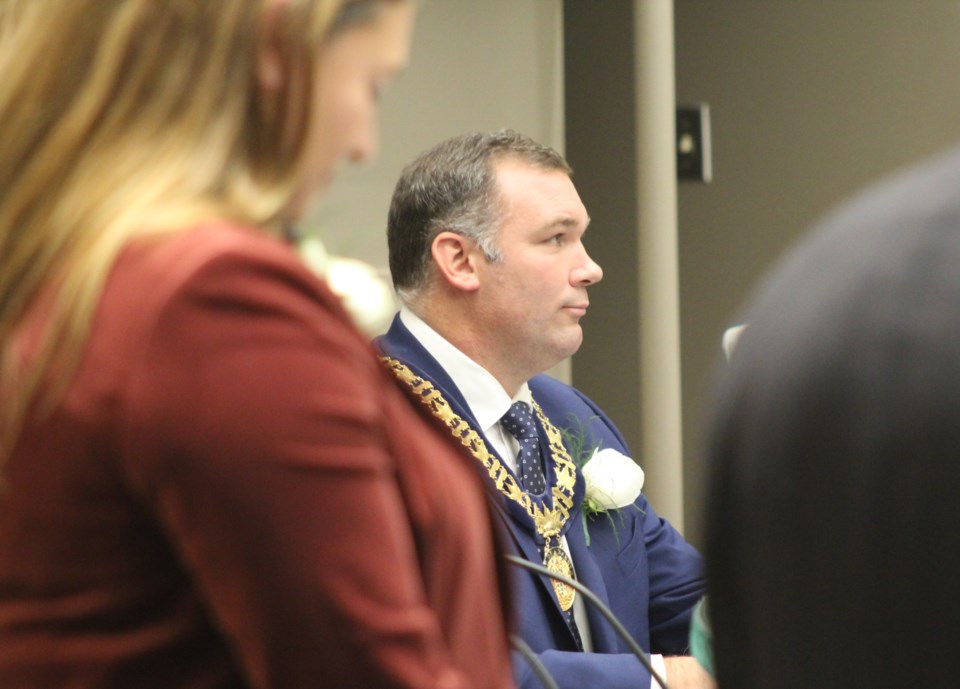Councillors continue to look at ways — and means — to make housing more affordable in Barrie.
On Jan. 10, they will consider a new affordable housing strategy to guide the city toward housing affordability this year and beyond, as resources and budgets allow, have city staff bring forward an implementation plan, including budget requirements. City staff will report back by next June.
Barrie Mayor Alex Nuttall says he looks forward to the discussion councillors will have on this matter.
“While I agree with much of what is in the report, there appears to be the need for more funding to meet demand for increased housing that is attainable and affordable,” he said.
Affordable housing is a range of housing types allowing families and individuals, of all income levels, to find suitable places to live without spending a disproportionate percentage of their income on housing. Affordable housing can include ownership, rental or subsidized housing.
The affordability threshold of the community by income for both the ownership and rental market, defines the maximum affordable purchase price and maximum monthly rental rate, based on housing costs, is 30 per cent of gross household income.

Based on a housing needs assessment the current affordable purchase price is $399,338 and monthly rental rate is $2,043, according to the strategy.
Key findings from that assessment are that average prices for owning a home are almost entirely unaffordable to those below a household income of $216,473, looking at an affordable purchase price of $728,207. Pricing for market-rate rental housing is mostly unaffordable to those with a household income below $97,192 for an affordable rental price $2,430.
For ownership options, only resale one-bedroom condominium apartments offer an average price point that is deemed affordable, and the price of single-detached homes exceeds all incomes for affordability.
The affordable market rate rental options were limited mostly to small apartments and basement units.
The assessment concludes that both ownership and rental affordability is significantly strained across the city.
But the affordable housing strategy outlines several ways to address housing affordability.
They include undertaking a comprehensive review of Barrie’s zoning bylaw, which is underway, updating the city’s existing incentive program and increasing the annual budget on affordable housing, and using public land for new affordable housing, which is also underway. Also, working toward shorter approval timelines, creating a program connecting those interested in new housing partnerships, enhancing the Simcoe County secondary-suite program for Barrie, and enacting a rental replacement bylaw to preserve existing rental stock. The city would also explore more inclusionary zoning in Barrie and encourage the public to voice their opinions and concerns about growth, density and affordable housing.
“Time will tell which are successful and have an impact and which ones are meeting expectations,” Nuttall said. “Most important is that we make progress immediately on the affordability crisis.”
If approved by city council, staff would work on an implementation plan and provide annual updates with a new affordable housing report card.
Reporting metrics chosen, staff say, should include market indicators that illustrate whether housing affordability is improving or worsening. Market indicators provide more comprehensive information on the overall state of affordability in Barrie. They are preferred to selecting a specific housing target of new units created, as was done in the previous affordable housing strategy, which set a goal of constructing 840 affordable housing units by 2025. The target was achieved in 2020, and yet the lack of affordability in Barrie is at an all-time high.
The affordable housing strategy focuses on action to improve housing affordability across Barrie, but it’s important to note the County of Simcoe is the city’s housing service manager, by the Housing Services Act of 2011, and is responsible for providing services such as emergency shelters, transitional housing and social housing.
“We will continue to work with the County of Simcoe on delivering new housing in a number of ways, but will continue to learn from other municipalities that are also moving forward with new initiatives,” Nuttall said.
The affordable housing strategy, done with N. Barry Lyons Consulting, also recommends the community improvement plan (CIP) for affordable housing be funded with an annual budget of $3 million or more. The CIP received 1.2 million in funding for 2024, $660,000 (55 per cent) is allocated to the affordable housing CIP.
The CIP provides financial incentives for eligible projects that target key planning and growth management objectives for development in Barrie. Eligible projects include affordable housing, brownfield site redevelopment and mixed use developments within the urban growth centre, key intensification areas and the preservation of built heritage.
Other measures may also play a role in Barrie’s affordable housing strategy.
On Dec. 6, Bill 150, the Planning Statute Law Amendment Act, 2023 was given royal assent bringing into effect the Official Plan as adopted by Barrie city council in 2022. This brings into effect policies requiring 15 per cent of all new housing units each year to be affordable.
There are specific policy targets for the Urban Growth Centre (UCG) and Major Transit Station Areas (MTSA) and requirements for medium and high-density land designations.
All development proposals with more than 40 residential dwelling units proposed are also required to demonstrate the provision of affordable housing units.
Also last Dec. 6, Bill 134, the Affordable Homes and Good Jobs Act, 2023, received royal assent. It amended the Development Charges Act, 1997 to create new definitions for the sections which exempt affordable residential units from development charges (DCs).
DCs are designed to recover the capital costs associated with residential and non-residential (commercial, industrial, institutional) growth within a municipality from developers, so that existing residents don’t have to foot the bill.



